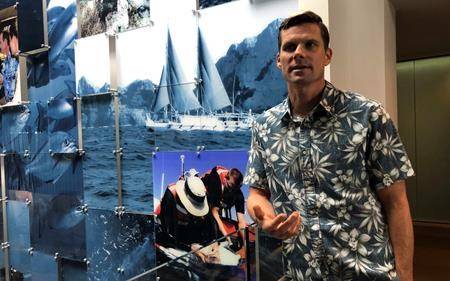At the edge of an ancient lava flow where jagged rocks meet the Pacific, small off-the-grid homes overlook the calm blue waters of Papa Bay on Hawaii’s Big Island — no tourists or hotels in sight.
Here, one of the islands’ most abundant and vibrant coral reefs thrives just below the surface.
Yet even this remote shoreline, far from the impacts of chemical sunscreen, trampling feet and industrial wastewater, is showing early signs of what’s expected to be a catastrophic season for coral in Hawaii.
Just four years after a major marine heat wave killed nearly half of this coastline’s coral, federal researchers are predicting another round of hot water will cause some of the worst coral bleaching the region has ever experienced.
“In 2015, we hit temperatures that we’ve never recorded ever in Hawaii,” said Jamison Gove, an oceanographer with the National Oceanic and Atmospheric Administration. “What is really important — or alarming, probably more appropriately — about this event is that we’ve been tracking above where we were at this time in 2015.”
Researchers using high-tech equipment to monitor Hawaii’s reefs are seeing early signs of bleaching in Papa Bay and elsewhere caused by a marine heat wave that has sent temperatures soaring to record highs for months. June, July and parts of August all experienced the hottest ocean temperatures ever recorded around the Hawaiian Islands. So far in September, oceanic temperatures are below only those seen in 2015.
Forecasters expect high temperatures in the north Pacific will continue to pump heat into Hawaii’s waters well into October.
Coral reefs are vital around the world as they not only provide a habitat for fish — the base of the marine food chain — but food and medicine for humans. They also create an essential shoreline barrier that breaks apart large ocean swells and protects densely populated shorelines from storm surges during hurricanes.
In Hawaii, reefs are also a major part of the economy: Tourism thrives largely because of coral reefs that help create and protect iconic white sand beaches, offer snorkeling and diving spots, and help form waves that draw surfers from around the world.
“This is widespread, 100% bleaching of most corals,” Gove said. And many of those corals are still recovering from the 2015 bleaching event, meaning they are more susceptible to thermal stress.
According to the NOAA, the heat wave’s causes include a persistent low-pressure weather pattern between Hawaii and Alaska that has weakened winds that otherwise might mix and cool surface waters across much of the North Pacific. What’s causing that is unclear: It might reflect the atmosphere’s usual chaotic motion, or it could be related to the warming of the oceans and other effects of human-made climate change.
READ MORE: McKenna defends Canada’s climate credibility amid Trudeau controversy
Beyond this event, oceanic temperatures will continue to rise in the coming years, Gove said. “There’s no question that global climate change is contributing to what we’re experiencing.”
Caleb Jones, The Associated Press
Like us on Facebook and follow us on Twitter



